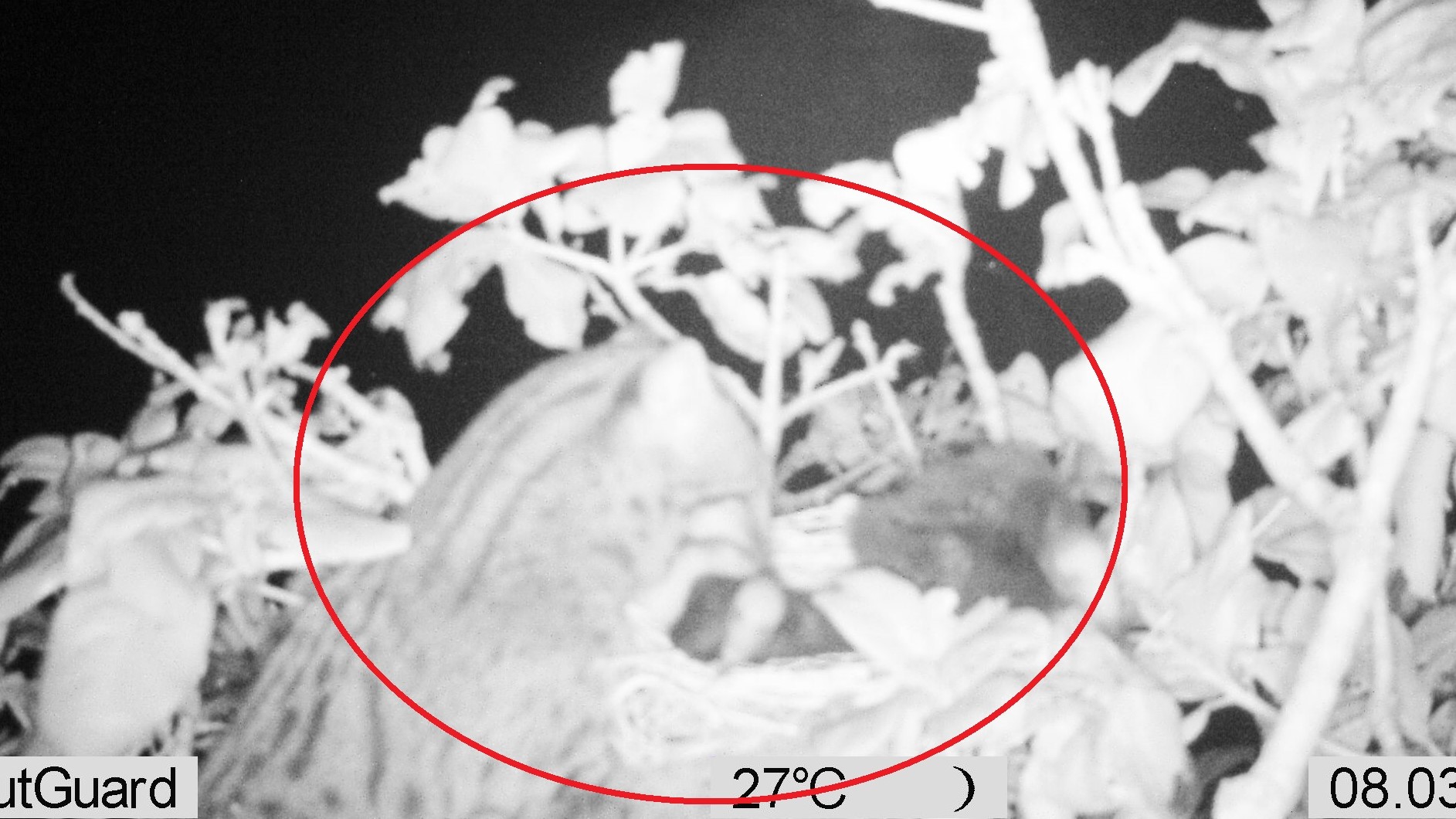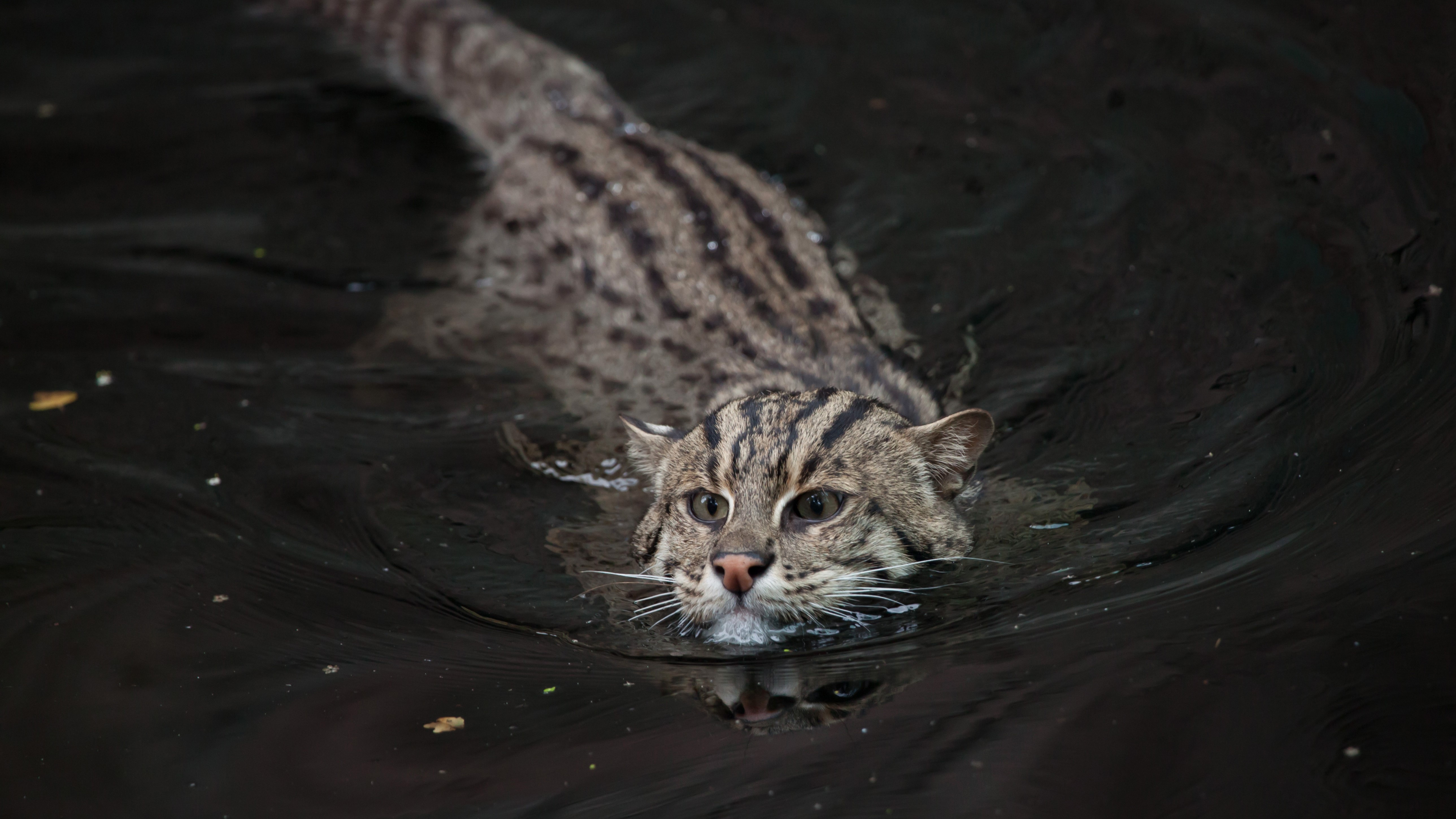Fishing cats seen feasting on chicks at the tops of 26-foot-tall trees in Bangladesh
South Asian fishing cats have been caught on camera hunting chicks in tree tops, potentially solving the mystery of how this vulnerable species survives during the monsoon season.

For the first time, scientists have spotted South Asian fishing cats climbing tall trees to raid bird nests — displaying a rare and highly unusual behavior.
The researchers made the unexpected discovery using motion cameras set up in tree canopies in northeast Bangladesh, which captured 19 instances of nocturnal predation by fishing cats (Prionailurus viverrinus) on two different wetland bird colonies in northeast Bangladesh.
"South Asian wetlands are heavily anthropized, often transformed for aquaculture or free-ranging duck pens, so the fishing cat might have an unknown dependency on the wetland bird colonies," said study co-author Muntasir Akash, an assistant professor in zoology at the University of Dhaka in Bangladesh. "Although fishing cats primarily feed on fish, there are reports of it taking waterbirds such as moorhens, herons, egrets and cormorants," Akash told Live Science.
Scientists observed 282 days' worth of footage to gain insight into fishing cats' foraging patterns and human-cat interactions, when they spotted the unusual behavior.
In one case, researchers observed a cat biting the neck of a little cormorant (Microcarbo niger) chick in a nest in the canopy of a 26-foot-tall (8 meters) Indian oak tree (Barringtonia acutangular).
Related: Adorable but deadly little wildcat may be inbreeding at 'alarming' rates, study finds
As the name suggests, fishing cats mostly eat fish and they have several adaptations that help them catch their aquatic prey, including two layers of water-resistant fur, semi-retractile claws and partially webbed forepaws.
Sign up for the Live Science daily newsletter now
Get the world’s most fascinating discoveries delivered straight to your inbox.
According to the San Diego Zoo Wildlife Alliance, these cats hunt by wading into shallow water to scoop fish out with their paws, or dive headfirst into deeper water to grab prey with their teeth.

Despite these adaptations, fishing cats still retain many typical feline features that scientists say could aid their survival during monsoon season, when their usual water-based hunting grounds are flooded or destroyed. "In monsoon season, almost the whole country becomes a wetland. So, where do they go at that time?" Akash said. "It is a mystery, but the general answer would be the village groves [where the waterbirds can be found]."
The species is currently rated as vulnerable by the International Union for Conservation of Nature, and their numbers are declining.
In addition to climate challenges, fishing cats also face conflicts with humans as they are frequently hunted or driven away from fertile fishing areas by people.
However, scientists say this latest evidence shows how fishing cats could survive during the rainy season, and that an ability to hunt birds in the tree canopy could provide vital shelter and an alternative food source.
The researchers say the findings could aid conservation efforts, as this new evidence suggests fishing cats might depend on the wetland bird colonies that are vulnerable to hunting and tree felling. "A stable population of wetland bird colonies might be a win-win for the wetland, fishing cats and the local people who depend on the wetlands," Akash said.

Carys Matthews is a freelance writer for Live Science and has a passion for the natural world. Most recently the group digital editor of BBC Wildlife and BBC Countryfile Magazine, she writes about the outdoors, nature and health and fitness. Prior to this she has worked for a number of sports and environmental titles in the U.K.









